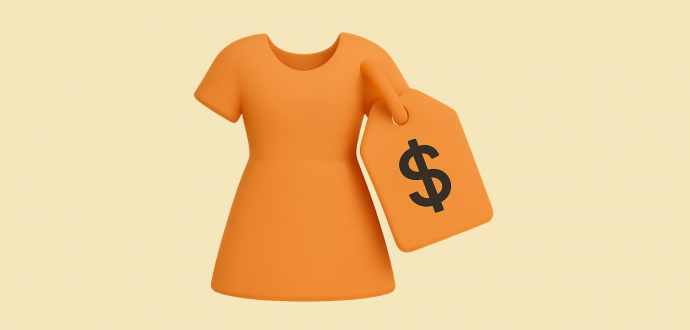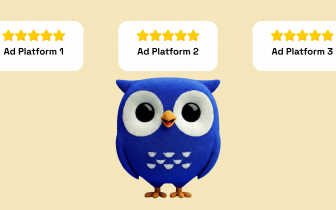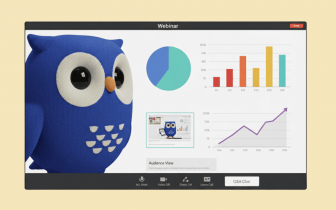How to Price a Product: Most Common Strategies

Price tags are everywhere.
And if you are a business owner, you’ve most likely thought about how they create those.
Often, this gets extremely confusing. Should you just set the same rate as your competition? Should you become the most affordable offer in the market? Or maybe you need to be the absolute premium?
Yes, understanding how to price your products and services isn’t the easiest thing.
That’s why in this post, we’ll look at the most important factors, strategies, models, and examples you have to consider.
After reading this, you’ll definitely have fewer doubts.
Components of product pricing
Before you can calculate the cost of the product, you have to first figure out what the pricing can potentially consist of. Some of the most common ones are:
1. The real cost of production
This is talking about the expense of everything that it took to turn that product or service into reality. So that means what it takes to get the raw materials that your goods are made of, manufacturing, and even packaging. It also covers the cost of restocking and shipping them.
For a service-based business, it would look slightly different, but the same principle still applies. You would have to count all your salaries, training, tools, etc.
Costs that fall under this category are also known as variable costs, which are costs that can change with each production. For example, the price of raw materials and shipping can change from time to time.
2. Operational expenses
You probably had to pay rent for the office and the manufacturing site. Then, there’s buying and maintaining the right equipment and paying salaries to people who operate those machines.
Any expenses you had to make to keep the business going would fall under operational costs. And yes, that subscription to your favorite AI software counts too.
For service-based businesses, these are quite similar to production costs. The only difference is that production is everything you need to deliver your service to the client. And operational expenses are the ones you need to sustain your company (e.g., your website, HR, rent, etc.)
All your marketing efforts also fall under this category. You might need to take out an ad, pay someone to write a banging copy for a landing page, or get SEO software. In some cases, you might even need the services of a content creation and link placement provider.
Whatever that is, this spending is operational.
Usually, these types of expenses make up what is known as fixed costs. This is because the cost of things like rent, software, subscriptions, and even salaries tend to remain constant over long periods. They don’t really change much when you're producing more or fewer goods.
3. Distribution costs
Even after making your goods, you’re still going to need money to get them into the hands of the end user. Lots of it, in fact. Whatever you need to deliver your product or service to your audience belongs here.
So, when trying to figure out how to calculate product cost, you need to factor in these expenses as well. It could be a physical shipment of products or any solution/platform used to deliver services.
What if you decide to sell your products on e-commerce platforms like Amazon? Or put up your software on the App Store? Well, if those platforms require some sort of fees or commission, then this falls under distribution costs as well.
4. Taxes and legal
Almost every country requires businesses to pay some form of tax. If you are selling to an international audience, you may also be required to pay international tariffs. No matter what the regional differences are, the idea is still the same — it will cost you something.
Besides, you will need to have an accountant, legal advisors, etc. And the higher the taxes and legal fees (including sales, VAT, import duties), the higher your product pricing might get.
5. Profit margin
Well, now that you have all the costs figured out, the next component to focus on is the profit margin. It’s basically the amount of money you get to keep after running up all these expenses.
If you have a desired profit margin in mind, ideally, it should cover the costs above and still fall within the acceptable market rates.
That means you need to choose an amount that is high enough to cover your expenditures and ensure that you still have something left after the dust is settled. But, the offer must not be so expensive that people will be forced to go to your competitors because theirs is much lower.
You can use this simple formula to calculate your selling price (SP) with different profit margins:
Target SP = (variable cost per product) / (1 - your desired profit margin as a decimal)
So, say you want to make a 20% profit on all your products. And the product cost is $40, then your SP will be $40 / (1 – 0.2) = $70 / 0.8 = $87.5.
In a nutshell, there are many components that affect how to price items or services in a way that leaves both you and the customers happy.
The good news is that there are many pricing strategies available that you can choose from. We’ll look at some of the most popular ones below.
6 types of pricing strategies and which one is better for you
When most businesses try to figure out how to determine the price of a product, they normally settle for a number that will cover their expenditures while still giving them a reasonable profit. Still, there are multiple strategies, depending on what you sell:
1. Value-added strategy
The idea behind the value-added strategy is pretty obvious — your product’s worth is based on the value you bring to the table. That’s it.
Here, you aren’t focused on what it costs to produce the items or make that service available. You set your price based on the value your audience receives.
You’ll find this common with high-end luxury brands that focus on an exclusive experience. Sometimes, the production costs might not really be that high. But if it’s a niche or rare item and the target audience is very interested, the cost could be surprisingly high.
With this strategy, customers often pay for brand, ecosystem, premium service, perception of the product/service, etc. All this leads to high profit margins. That’s why devices like the iPhone cost what they cost.
Source: Statista
A banana taped to a wall art can sell for millions, even though the production cost is obviously low. That is, as long as the customer perceives it as being valuable.
Source: VOA
In the same way, SaaS solutions (especially in B2B) often don’t charge based on what it takes to run their software, no. They charge based on how much money or time they save/generate for their clients.
It could potentially work for any type of product/service, even if you don’t offer anything exclusive.
Take something as simple as a cake. It might be made with the same ingredients but priced differently.
For instance, the one shaped like a heart might cost more during Valentine's because of the value it holds to the buyers. The same goes for the wedding cakes, where the prices typically skyrocket.
2. Cost-plus model
The cost-plus tactic is probably the most straightforward model on this list. You’re definitely familiar with this one because many businesses use this approach (especially small ones).
To calculate the price of your wares based on this strategy, you have to first calculate the production costs (both fixed and variable). And then add a markup to the production cost.
So, it’s really simple: Total cost per unit + Markup.
Source: Flipkart Commerce Cloud
One advantage of this system is that it's very easy to implement, and you can easily spot when you aren’t covering all expenses. It’s used mostly by manufacturers, retailers, and people who sell everyday items or work in very low-margin niches.
But there is also a downside to this model — it can often be out of context. You can either overcharge or undercharge, which leads to uncompetitive pricing or sacrificed profits.
That’s why it’s important to understand the perceived value of your offering and analyze your competitors’ approaches.
3. Penetration system
The penetration system is a common tactic used by newcomers to the niche. Ever seen a new brand offering its merchandise at a much lower rate than its competitors? Yeah, well, they are using the penetration strategy.
How this works is that the new business offers its product or service at a low rate to attract customers. The company generates a lot of buzz based on the much more affordable offering compared to other brands. Rings a bell, right?
Source: The Conversation
Then, as time goes on, they tend to gradually raise the price and hope that the new customers will continue to stick around. The good thing with this is that it can help a brand to penetrate the market quickly and can even improve brand loyalty.
This is, for example, a secret to the fast rise of Xiaomi. They’ve entered the smartphone market with a very attractive offer, and now they’re one of the fastest-growing smartphone manufacturers.
Source: Counterpoint Research
But of course, all of this comes at a cost — your profit margin will be very low at the beginning. Plus, you might also lose some customers when you raise prices later.
4. Competitive approach
A competitive model doesn’t mean that you have to set the same prices as your competitors. But you definitely choose the market situation as your main point of reference, not the value or the production cost.
First, you have to research your competition. After that, you basically have three scenarios:
Source: Metrics Cart
1. Charge less than your competitors. This one is often paired with upsell and cross-sell tactics. This is what low-cost airlines do. They charge you a very low fee for the ticket, but then, you have to pay extra for everything.
Source: Reconvert
2. Match other companies’ prices. This is often the case for your typical retail. Here, you can offer an extra something for the same money to make your offer more competitive. Or you can work on your brand to make people pick you over similar alternatives.
Source: Walmart
3. Set your prices higher than your competitors. If you want to position yourself as someone who offers more than the average on the market, you can make your product/service more expensive than the rest.
Source: United Sodas
Often, to make this approach work, you’ll have to check both your direct competition and indirect competitors.
5. Price skimming
Price skimming is the direct opposite of market penetration. Instead of starting off with a super affordable offer, the vendor or company starts with a high price tag right as they are entering the market. A bold move, for sure, but it can work when done well.
The idea is to make the most profit from the first set of people who buy the products early. Usually, people see something more expensive and associate it with better quality. Besides, some are willing to pay more for exclusivity.
Many businesses that use this model tend to lower their prices later on, at least for some markets, or by offering a newer solution/product. This works well in the tech industry, where new innovative products usually cost a lot more when they are first released.
Case in point, every new iPhone model typically costs even more than the previous one. But by the time it is announced, there is always a discount for the previous models.
Source: VNExpress
The good side of this method is that you get to attract people who don’t mind paying a premium for that special feeling of being the first to own something rare or unique. You can easily recover most of your production costs from this group.
Then gradually, lower your price to attract more people.
On the other hand, you may end up completely losing the customers who are looking for affordable options. So, it all depends on your positioning. Besides, it can also be connected to your competitors’ strategies.
Source: Omniaretail
6. Psychological method
As the name suggests, psychological strategy targets the buyers’ emotions. The goal is to set the tone or influence how people perceive the value of the product or service. This is very common with vendors of everyday household items.
A typical example is pricing below a round number so that the customers feel like they are buying the product cheaper. The tags in supermarkets that read $9.99 or something like that are exactly what it is.
Source: ALDI
But it’s not just grocery stores that do this. You will find subscription services that cost $10.99 instead of $11 and so on. They are all counting on appealing to your emotions and need to spend less for more.
In reality, there are dozens of different tactics. So, it’s a matter of understanding what feelings you want to generate with your offer.
Source: Competera
So, then, what is the formula for determining selling prices (SP)? You may have heard people say that it’s:
SP = cost price × (1 + Profit % / 100).
That’s correct.
But how do they arrive at their prices in the first place? That’s what we will look at next.
How much should you charge? Calculate in 6 steps
You're ready. We've covered everything there is to know about things that can affect product pricing, whether for good or bad. Now you just need to understand how much to charge for the items/services you’re about to launch. You can do that in just six steps:
Step 1: Calculate all the costs it took to make your product
There are very few things you can make without needing to run into some kind of expense. So, before you decide the price of a product, you have to first figure out how much it costs to make it. This is what is known as direct costs.
To get these direct costs, you’ll add up everything from the raw materials, the cost of shipping them to your business place, electricity, labor costs, rent, and everything related. That means production, operational, and distributional costs.
You can go back to the first section of our guide for this.
Once you get how much they cost to produce, you are much closer to setting good selling prices for your products.
But before you jump into any decision, though, keep in mind that other expenditures we’ve already mentioned before — marketing, legal, fees, international tariffs (if applicable), etc.
Source: Irish Times
Step 2: Decide on your profit margin early on
After figuring out your product cost, you want to decide on a profit margin. This is something that can be fixed or vary from offering to offering.
It will be useful to review the pricing models we’ve listed before and make sure you have a strategy. For example, if you want to penetrate the market, you might choose a lower margin, or you can go completely exclusive with a much more expensive offering than the average.
It’s also normal to have different markups for different products and services. It will really depend on your business model. Some have a flagship offering that generates the most profit. Others earn the most from upselling.
Often, SaaS companies offer low-priced options. But their biggest money makers are enterprise solutions.
Source: Hubspot
Source: Hubspot
That’s why simply consider what works for you and your industry. There is no right or wrong here.
Step 3: Do your research
Often, the question of how to calculate the selling price comes down to good research. To make it useful, you have to focus on several areas:
- How well you know your target audience. You need to understand your customers' needs, financial capacity, and interests. You can use surveys, interviews, focus groups, etc., to get feedback and hear directly from them.
- What the competition is up to. You have to understand what the average is in your niche, even if you won’t use the same model. This goes beyond checking your competitors’ pricing strategy, but also what advantage they may have in terms of features, support, etc.
- Distribution channels. Are you selling through affiliates, wholesalers, or directly to the customer? This affects prices — with wholesalers or paid distribution platforms, you need to leave some margin to cover that cost.
The whole idea is to understand your audience, your market, your competitors, and the overall business tendencies.
Step 4: Experiment and test
The truth is, you might have a price in mind, but as time goes by, you'll probably need to adjust that. So, don't be afraid to do a bit of A/B testing.
This means trying out different approaches with different groups of clients. With a “perfect” pricing strategy, your sales volume tends to increase. So if you’re noticing fewer sales after recent changes, this might just not be the perfect fit for your audience.
Many experts suggest that you test with groups of old and new customers, or even people unfamiliar with your brand. Based on the responses you get, you can then adjust your pricing till you find a good ground.
You don’t have to limit yourself to just A/B testing. There are tons of different approaches to this. It simply depends on how much time and resources you have.
Source: UX Design
Step 5: Focus on long-term growth
Quick sales are great, but for a long-term growth strategy, you’ll need to look at the bigger picture. The longer your customers keep coming back for repeat purchases, the more profit you actually make.
For this reason, most brands that are focused on sustainable, long-term growth invest heavily in client retention strategies. They know that the customer lifetime value is a good way to increase revenue.
There are many brand examples with excellent marketing strategies that cover customer retention methods you can learn from. For example, customer loyalty is often a result of great support systems and brand experiences.
You can also create loyalty programs that encourage clients to keep coming back and even recommend you to others.
Ideally, you want to try as many tactics as possible and see what works best. You can also talk to your buyers and ask them why they like your product/solution. This can really be the key to retaining even more customers.
Source: Customer Thermometer
Step 6: Keep learning
Knowing how to find the selling price is like a journey that never ends. You might find the best way to do it today, but then the market changes, and what worked once will be simply outdated.
You’ll need to keep learning, adjusting, and experimenting if you want to remain relevant (and we all do).
So, make sure you’re tracking your performance consistently. You don’t need tons of metrics, but you do have to keep an eye on them all the time. Your sales data, customer feedback, and margins are some of the most important things you can track.
Besides, when you can, analyze your competitors as well. If they’re changing their prices and strategies, you’ll want to know why and look into that.
Conclusion
By now, you know exactly how to price a product or service and even what things can affect this.
It’s quite obvious that there is no single perfect approach. And only you, your strategy, and your detailed research can tell you what to do.
Hopefully, by knowing your options, you now have a clearer idea of what your offering is actually worth.



